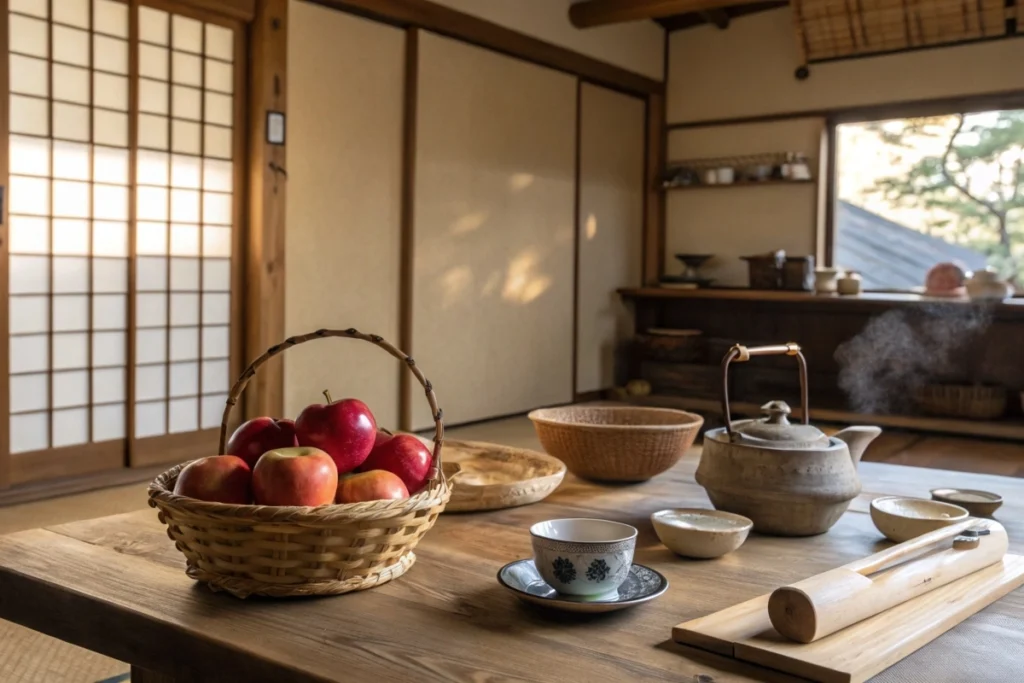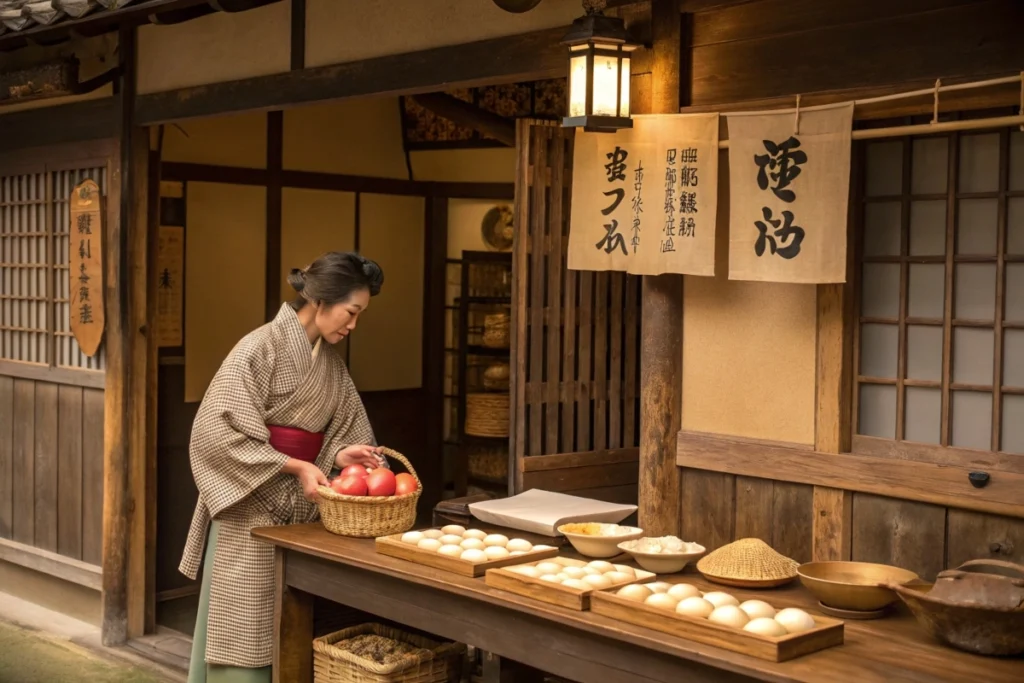A Complete Guide to Traditional and Modern Apple Pastries
Introduction
When you think of delicate desserts that are both comforting and refined, apple pastry recipes japanese traditions may not be the first to come to mind. Yet, Japanese pastry chefs have long embraced apples, incorporating them into subtle, harmonious treats that delight the palate. From invisible apple cake recipes layered with paper-thin slices to apple gyoza recipes that combine sweetness and texture, these desserts represent a unique fusion of tradition and innovation.
In this comprehensive guide, we’ll explore the world of Japanese apple pastries, revealing their history, regional influences, and popular variations. You’ll learn how to slice apples so finely they become almost translucent, discover the secrets behind easy invisible apple cake, and understand how Western baking techniques have influenced Japanese dessert artistry. Whether you’re a curious beginner or a seasoned baker, these recipes will inspire you to elevate your dessert-making skills. And if you’re eager to expand your horizons even further, be sure to discover more Japanese dessert recipes.

1. Understanding the Essence of apple pastry recipes japanese
Japanese apple pastries are about celebrating the natural sweetness and fragrance of apples, often with minimal sugar and careful attention to texture. Unlike some Western desserts that rely on heavy creams or sugary fillings, apple pastry recipes japanese styles focus on showcasing the fruit’s intrinsic qualities. It’s common to find desserts such as the apple pie Japan style, where the crust is flaky but light, and the filling highlights crisp, subtly sweet apple varieties.
One rising star among these treats is the invisible apple cake, known as gâteau invisible, which layers thinly sliced apples so closely that the batter seems to vanish. Similarly, apple gyoza—small dumplings filled with lightly spiced apples—offer a fusion of traditional Japanese wrapping techniques and a filling reminiscent of a classic apple pie. Meanwhile, thinly sliced apple cake recipes take great care in achieving uniform thickness, ensuring each bite offers a perfect apple-to-batter ratio.
These pastries often incorporate Japanese ingredients: think rice flour for gluten-free variations or miso for a subtle savory note. Seasonal influences are critical, with certain apple varieties celebrated in different regions of Japan. The elegance of these desserts lies in their simplicity, balance, and the artistry of assembly.
If you’re intrigued by these delightful creations, it’s worth exploring the broader landscape of Japanese confections. Each pastry tells a story—of regional harvests, culinary influence from the West, and the cultural emphasis on harmony and balance.
- Popular Japanese Apple Pastries:
- Invisible apple cake recipes (gâteau invisible)
- Apple gyoza infused with cinnamon
- Apple pie Japan style with delicate crust
- Thinly sliced apple cake for a visually stunning dessert
- Easy invisible apple cake variations to suit any home baker

2. Techniques for Perfectly Thinly Sliced Apples
Creating that signature “invisible” layering effect requires precision. The secret lies in slicing apples paper-thin, ensuring they cook evenly and melt into the batter. Start with firm, crisp apple varieties like Fuji or Granny Smith for easier slicing. Use a sharp Japanese knife or a mandoline for uniformity.
Begin by washing and coring the apples. You can peel them for a smoother texture or leave the skins on for extra color and nutrients. To prevent browning, gently soak the slices in water mixed with a splash of lemon juice. Pat them dry before folding them into your batter or placing them into the pastry dough.
For thinly sliced apple cake, arrange the slices in overlapping layers for a delicate, rose-like pattern. The key is to maintain even thickness—ideally around 1-2 millimeters. Too thick, and you lose that magical translucent effect; too thin, and the apples may become mushy. Remember, practice makes perfect. Start slowly, aim for consistency, and you’ll soon master the art of slicing.
For more ideas and guidance on pastry crafting, don’t hesitate to Explore traditional Japanese desserts recipes, where you’ll find inspiration beyond apple pastries.

3. Crafting “Gâteau Invisible” and Other Specialties
The gâteau invisible recipe originated in France but found a welcoming audience in Japan, where subtlety and elegance in dessert presentation are highly valued. This cake involves layering countless apple slices with a minimal amount of batter, resulting in a dessert that appears almost entirely composed of apples. When baked, the layers meld together, producing a custard-like texture with a hint of sweetness.
To make an easy invisible apple cake, start by slicing your apples thinly (as described above) and gently folding them into a simple batter made of eggs, milk, flour, and a touch of sugar. Some variations incorporate matcha or yuzu zest for a Japanese twist. Bake at a moderate temperature until the top is golden and a toothpick comes out clean.
Other specialties include apple mochi cakes, which bring together the chewiness of mochi with the softness of cooked apples. For those looking to reduce dairy, you can Try vegan Japanese adaptations that replace butter and milk with plant-based alternatives without compromising texture.
For authoritative guidance and inspiration, consider browsing this guide from BBC Good Food, which showcases a range of Japanese culinary traditions.
4. Regional Apple Pastry Variations in Japan
Japan’s diverse geography and climate mean apple production varies across regions. The Aomori Prefecture, for example, is famous for its crisp and aromatic apples. Local pastry chefs in Aomori use these apples to make apple gyoza recipes that burst with fresh flavor. The sweetness of the apples reduces the need for added sugar, resulting in desserts that highlight nature’s best.
In other regions, apples might be blended with red bean paste or paired with shiso leaves. Regional festivals often celebrate the apple harvest by featuring apple desserts in street stalls and teahouses. Seasonal changes also affect pastry variations—during autumn, bakers incorporate warm spices like cinnamon or nutmeg, evoking a comforting, cozy flavor profile.
If you’re ready for more Japanese dessert inspirations beyond apples, Discover more Japanese dessert inspirations to expand your culinary horizons. You might even find a local orchard’s website or a regional tourism page to learn more about the specific apple varieties that give these pastries their unique profiles.
5. Modern Twists: Fusing Western Techniques and Japanese Ingredients
Contemporary Japanese pastry chefs are unafraid to experiment. They blend the elegance of French patisserie with the nuanced flavors of Japanese ingredients. Consider incorporating a miso caramel drizzle over an easy invisible apple cake, or adding a layer of sweet azuki bean paste to your apple tart. Rice flour can replace wheat flour for a gluten-free, delicate crumb that suits those with dietary restrictions.
The result is a menu of hybrid desserts that reflect global culinary trends while staying true to Japanese principles of balance and seasonality. You might discover a crispy apple tempura dessert served with a dollop of subtly sweet tofu cream or a puff pastry filled with apples and a sake-infused custard.
For a touch of something different, why not Add a traditional twist with a Japanese old fashioned recipe to accompany your apple pastries? The interplay of flavors enhances the overall dining experience.
History/Context
The story of apples in Japan begins with the country’s openness to international influence during the Meiji era (late 19th century). Apples, native to Central Asia and popularized in Europe, arrived in Japan and slowly integrated into local agriculture. Over time, Japanese orchards perfected the cultivation of apples like Fuji, known worldwide for its sweetness and crisp texture.
As Western-style bakeries emerged in port cities, Japanese pastry chefs began experimenting with apples. In the early 20th century, the first apple pastry recipes japanese appeared—simple pies or tarts inspired by European techniques but adapted to Japanese tastes. Over the decades, influences from France and other culinary hubs shaped the development of today’s sophisticated apple desserts.
The invisible apple cake, while French in origin, found a nurturing home in Japan’s pastry world. The meticulous presentation, emphasis on quality ingredients, and love of subtlety aligned perfectly with Japanese dessert philosophy. Today, invisible apple cakes and other apple pastries are featured in upscale patisseries, casual cafes, and even home kitchens, reflecting a long history of cultural exchange and adaptation.

Practical Examples/Use Cases
Imagine hosting a Japanese tea ceremony in your own home. Alongside delicate green tea, you serve a slice of invisible apple cake. Its thin, translucent layers complement the tea’s bitterness, providing a gentle sweetness that doesn’t overwhelm the palate. Your guests marvel at the dessert’s elegance, and you explain that this treat represents a fusion of traditional Japanese aesthetics with Western baking artistry.
Alternatively, consider incorporating apple gyoza into a casual meal. After a savory course, these lightly sweet dumplings offer a refreshing dessert. Pair them with a slightly chilled sake or fruit-infused water for a light finish.
For busy weekdays, easy invisible apple cake recipes are a lifesaver. You can prepare the apple slices in advance, whisk together the batter quickly, and let the oven work its magic. The result is a versatile dessert that fits family dinners, potlucks, and even breakfast gatherings.

FAQs about apple pastry recipes japanese
- What is another name for apple pastry?
Apple pastries can go by many names depending on the recipe. A French-style apple tart might simply be called “tarte aux pommes,” while Japanese variations might be referred to more specifically as “ringo pie” or apple gyoza when using dumpling wrappers. - What is an apple gyoza?
An apple gyoza is a dessert twist on the classic savory dumpling. Thin wrappers encase a lightly sweetened apple filling, often with a hint of cinnamon. These dumplings are pan-fried until crisp and then steamed, resulting in a treat that’s part pastry, part dumpling, and entirely delicious. - How to make apple cake Mary Berry?
Mary Berry’s apple cake typically involves a simple sponge batter with chunks of apple folded in. While not Japanese in origin, you can find her traditional recipe on reputable cooking sites. To add a Japanese twist, use Fuji apples and subtle spices like ginger or yuzu zest.
(External reference: BBC Food on Apple Cakes) - What is another name for the Japanese apple?
The “Japanese apple” can refer to certain apple varieties grown in Japan, such as Fuji or Mutsu. Some people also use “Japanese apple” to describe persimmons, though they are different fruits. Always clarify which fruit you mean in a recipe context. - Can I use any apple variety in these pastries?
Yes, but firm and slightly tart varieties like Fuji or Granny Smith work best. - How long do these pastries keep?
Most apple pastries taste best fresh, but they can usually keep for 1-2 days refrigerated. Reheat gently if needed. - Are Japanese apple pastries difficult to make?
Not necessarily. With proper slicing techniques and a bit of practice, even beginners can create these elegant desserts.

Conclusion for apple pastry recipes japanese
As you have discovered, apple pastry recipes japanese are more than just sweets; they are cultural expressions of balance, subtlety, and innovation. From the historical integration of apples into Japan’s culinary landscape to the modern adoption of Western techniques, these pastries continue to evolve while remaining true to the country’s aesthetic and culinary values.
Whether you’re slicing apples paper-thin for an invisible apple cake, experimenting with miso caramel drizzle, or embracing the simplicity of an apple gyoza, each dessert offers a story and a sensory experience. Don’t be afraid to get creative—add a hint of matcha, swap out flour for rice flour, or incorporate seasonal fruits alongside apples.
Ready to explore more? Discover more Japanese recipes to continue your culinary journey. With a bit of practice and curiosity, you’ll find that Japanese apple pastries can become a delicious staple in your kitchen, delighting family and friends for years to come.

